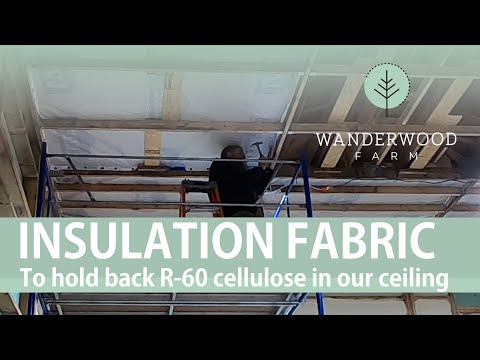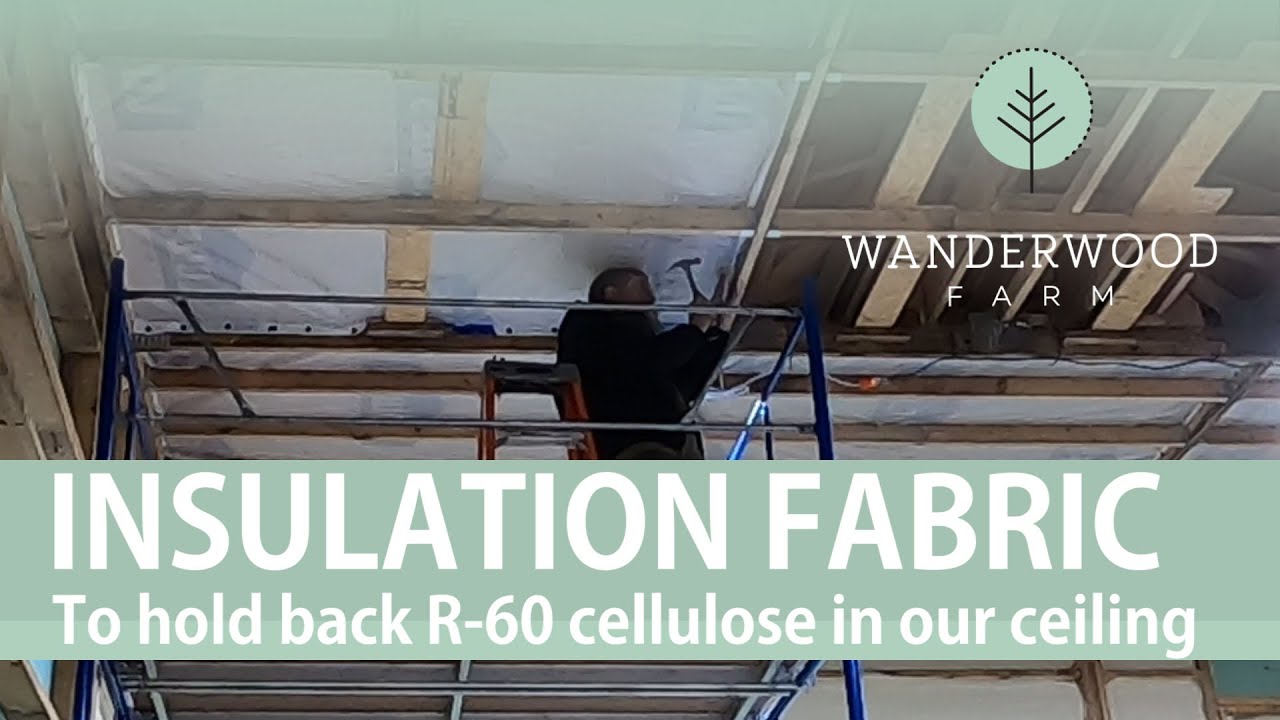Fabric insulation is a revolutionary technology that will transform the way you experience comfort and energy efficiency in your home. Say goodbye to chilly winters and scorching summers with this innovative solution. Designed to keep your living spaces perfectly insulated, this fabric harnesses the power of advanced thermal, sound, and heat control. It seamlessly envelops your walls, floors, and ceilings, creating a barrier that effectively traps heat during cold seasons and repels it during hot ones. With its exceptional thermal properties, it ensures a cozy environment all year round, reducing the need for excessive heating or cooling systems and ultimately lowering your energy bills. Not only does this fabric provide exceptional thermal insulation, but it also acts as a barrier against unwanted noise, making your living spaces more serene and peaceful. Made from high-quality materials, it is not only durable and long-lasting but also eco-friendly, contributing to a sustainable future. Say hello to a home that is not only comfortable but also environmentally conscious. Upgrade your insulation game with this innovative fabric technology and experience the true meaning of year-round comfort.

The Benefits of Fabric Insulation for Your Home
When it comes to insulating your home, there are a variety of options available. One option that is gaining popularity is fabric insulation. Fabric insulation offers numerous benefits that make it an attractive choice for homeowners. In this article, we will explore the advantages of fabric insulation and why you should consider it for your home.
Improved Energy Efficiency
Fabric insulation can significantly improve the energy efficiency of your home. It works by creating a barrier that prevents heat transfer, keeping your home cooler in the summer and warmer in the winter. This means that your heating and cooling systems will not have to work as hard to maintain a comfortable temperature, resulting in lower energy bills.
Additionally, fabric insulation can reduce air leakage in your home. Air leakage occurs when outside air infiltrates your home through cracks and gaps in the walls, windows, and doors. By sealing these areas with fabric insulation, you can prevent drafts and keep your indoor environment more comfortable.
Soundproofing Properties
If you live in a noisy neighborhood or have loud neighbors, fabric insulation can help reduce unwanted noise. The dense and absorbent nature of fabric insulation makes it an excellent soundproofing material. It can absorb sound waves, preventing them from entering or leaving your home.
Whether you want to create a peaceful environment for sleeping or need a quiet space for work or relaxation, fabric insulation can provide the soundproofing you need. It can effectively reduce noise from traffic, construction, barking dogs, and other external sources, allowing you to enjoy a quieter and more peaceful home.
Improved Indoor Air Quality
Fabric insulation is made from natural materials like cotton or wool, which are free from harmful chemicals and toxins. This makes fabric insulation an eco-friendly choice that promotes better indoor air quality. Unlike traditional insulation materials like fiberglass, fabric insulation does not release any harmful particles or fibers into the air.
In addition, fabric insulation is resistant to mold and mildew growth. Mold and mildew can thrive in damp environments and can be detrimental to your health. With fabric insulation, you can create a healthier living space by preventing the growth of these harmful substances.
Easy Installation and Maintenance
Fabric insulation is easy to install and requires minimal maintenance. Unlike other insulation options that may require professional installation or extensive preparation, fabric insulation can be easily installed as a DIY project. It can be cut to fit any space and can be attached using adhesive or staples.
Furthermore, fabric insulation is not prone to settling or sagging over time, ensuring that its insulating properties remain effective. It does not require regular maintenance or replacement, making it a cost-effective and hassle-free insulation solution.
Eco-Friendly and Sustainable
One of the major advantages of fabric insulation is its eco-friendly and sustainable nature. Fabric insulation is often made from recycled or renewable materials, reducing the environmental impact of production. Additionally, fabric insulation is recyclable at the end of its lifespan, making it a more sustainable choice compared to traditional insulation options.
Choosing fabric insulation for your home not only benefits you but also contributes to a greener and more sustainable planet.
Conclusion
Fabric insulation offers numerous advantages that make it a compelling choice for homeowners. From improved energy efficiency and soundproofing properties to better indoor air quality and easy installation, fabric insulation provides a range of benefits that can enhance your home’s comfort and performance.
Furthermore, its eco-friendly and sustainable nature makes it a responsible choice for those who prioritize environmental conservation. If you are considering insulating your home, fabric insulation is definitely worth exploring.
“Revolutionizing Attic Insulation: Unveiling the Powerful R-60 Cellulose Fabric (054)”
Video Source : Wanderwood Farm
Fabric Insulation:
Fabric Insulation Table
| Fabric Type | Thermal Resistance (R-value) | Advantages | Disadvantages |
|---|---|---|---|
| Wool | R-3.5 per inch | Excellent insulator, natural and renewable material, moisture-wicking properties, fire-resistant | Expensive, can shrink if not cared for properly |
| Cotton | R-2.9 per inch | Cost-effective, breathable, hypoallergenic, easy to maintain and clean | Lower insulating power compared to other materials, may retain moisture if exposed to water |
| Polyester | R-3.3 per inch | Durable, lightweight, non-allergenic, resistant to mold and mildew | Not as environmentally friendly as natural materials, can melt or burn if exposed to high heat |
| Fiberglass | R-3.7 per inch | Highly effective insulator, affordable, resistant to insects, moisture, and fire | Potential health hazards if fibers are inhaled, requires protective gear during installation |
Fabric insulation provides an essential solution for maintaining comfortable indoor temperatures while minimizing energy consumption. This table presents key information about various fabric insulation types commonly used in construction and home insulation projects. Each fabric type possesses specific thermal resistance (R-value), advantages, and disadvantages that should be considered when selecting the most suitable material for insulation purposes.
Wool, renowned for its exceptional insulating properties, stands out as a natural and renewable material. Its moisture-wicking capabilities make it an excellent choice for controlling humidity levels. Moreover, wool exhibits remarkable fire resistance. However, it is important to note that wool insulation can be relatively expensive and requires proper care to prevent shrinking.
Cotton, on the other hand, offers a cost-effective solution with numerous advantages. It is a breathable fabric, hypoallergenic, and easy to maintain and clean. Although cotton may not provide the highest insulating power compared to other materials, it remains an attractive option for those seeking an environmentally friendly and moisture-resistant insulation solution.
Polyester fabric insulation, known for its durability and lightweight properties, provides a non-allergenic alternative. It exhibits resistance to mold and mildew, making it suitable for areas prone to high humidity. However, it is important to acknowledge that polyester is not as eco-friendly as natural materials and can melt or burn if exposed to high heat.
Fiberglass insulation is widely recognized for its high effectiveness and affordability. It demonstrates excellent resistance to insects, moisture, and fire. However, it is crucial to handle fiberglass with caution during installation to avoid potential health hazards associated with inhaling its fibers. Protective gear should be used to ensure safety.
Consider the unique features and characteristics of each fabric insulation type when selecting the most appropriate option for your insulation needs.

